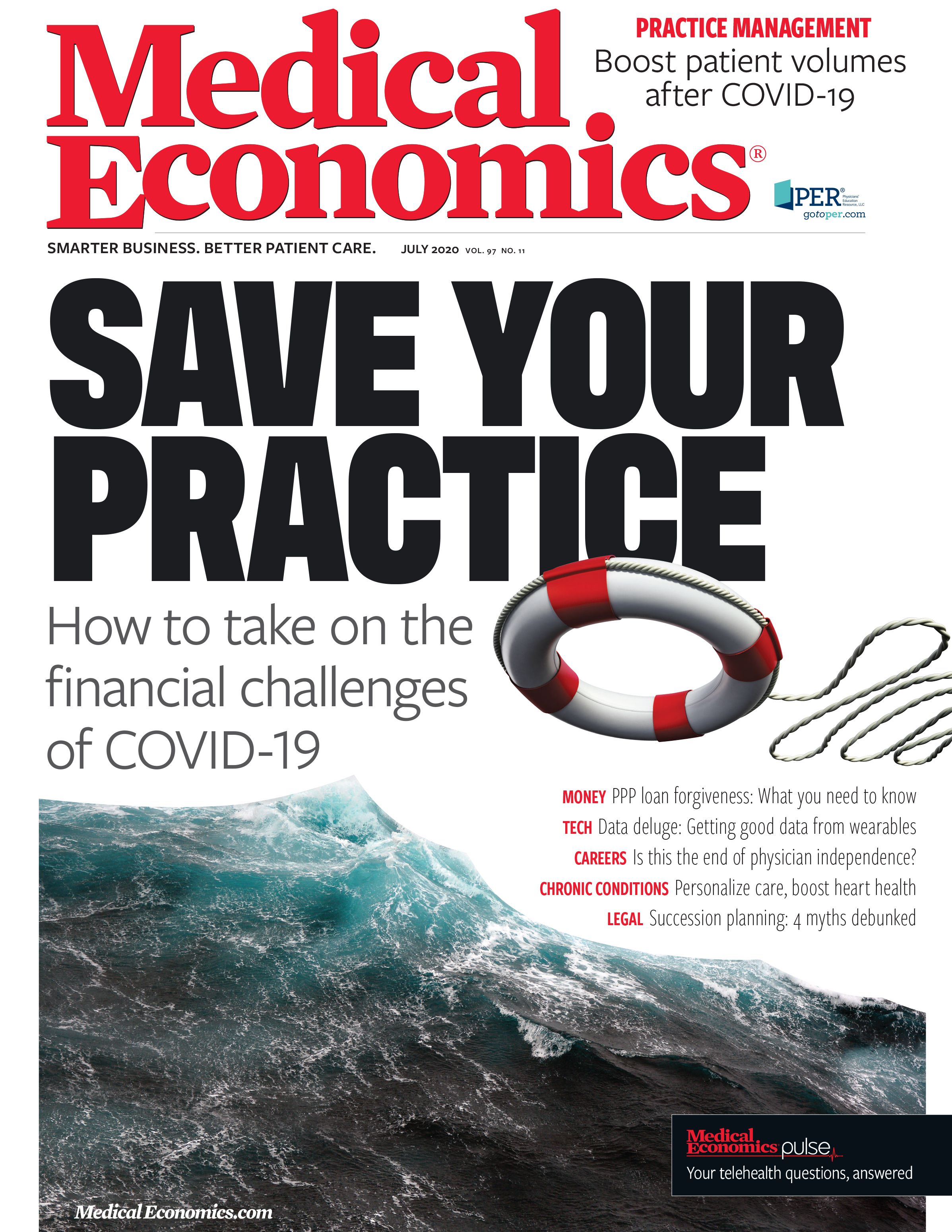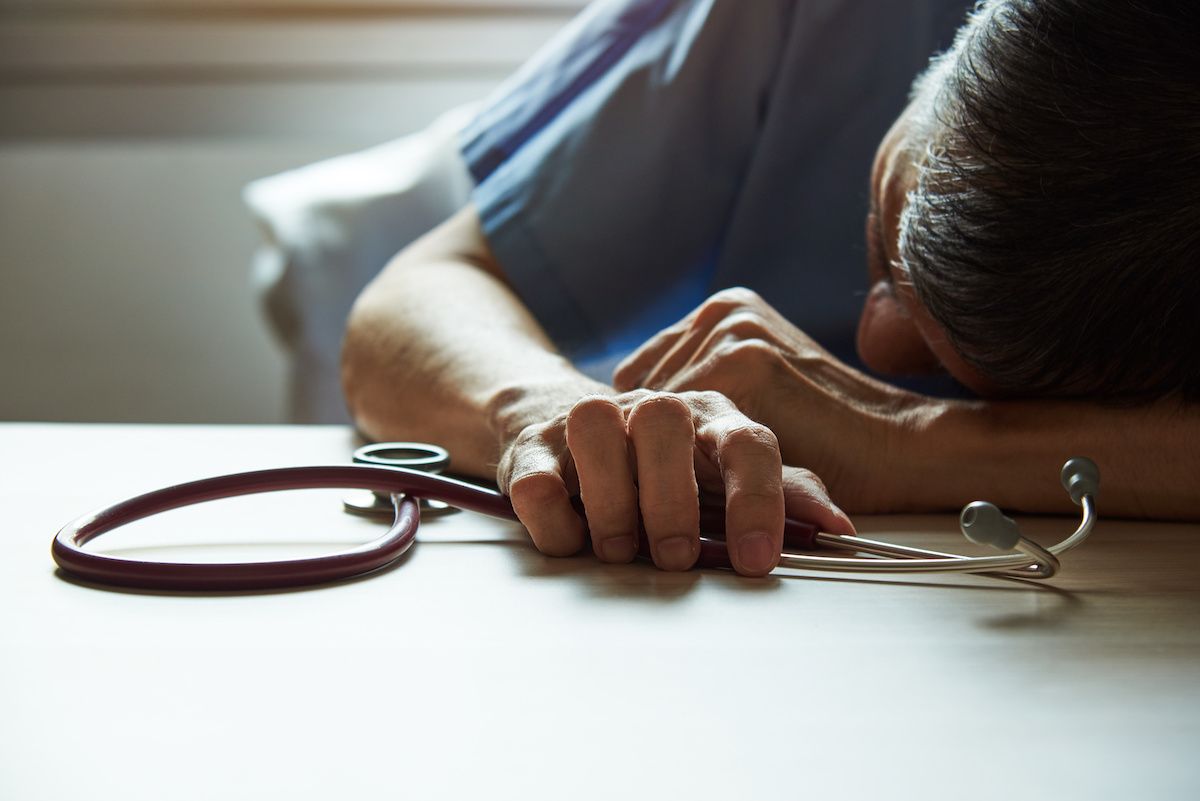Publication
Article
Medical Economics Journal
Fanning the flames: the impact of COVID-19 on physician burnout
Author(s):
Burnout was bad before the pandemic. COVID is likely to make the problem worse.
Burnout has been a widespread and growing problem among doctors in recent years, brought on by frustrations with paperwork, electronic health records and other distractions from patient care.
Now, doctors face the additional challenges of caring for patients with the coronavirus while trying to remain healthy themselves. To explore how the COVID-19 pandemic is affecting burnout, Medical Economics® spoke with Susan Hingle, M.D., MACP, who is leading the efforts for the American College of Physicians (ACP) to fight burnout among its members.
Hingle is a past chair of the ACP Board of Regents and Board of Governors and is a professor of medicine at Southern Illinois University School of Medicine. This interview has been edited for length and clarity.
Medical Economics®: What do you think the pandemic’s impact is going to be on burnout among primary care doctors? Is it causing more doctors to feel exhausted and overwhelmed? Or is it giving them a new sense of meaning about the importance of their work and reducing feelings of burnout?
Hingle: I think a lot of it remains to be seen. The likelihood is that it will increase burnout. Like you said, we’re only in the early phases of the coronavirus. ... Four different phases (are predicted). The one that we’re currently in ... is really the immediate morbidity and mortality related to COVID-19. The second phase is anticipated to be the impact on urgent non-COVID conditions. So all the resources are currently being directed to fight the virus, which is (how) it should be.
But there are a lot of other chronic and acute health issues coming up. That’s supposed to be the second wave, and I (liken) it to running a sprint and a marathon at the same time. Then the third wave is anticipated to be the impact of interrupted care on patients with chronic conditions. And that’s where it really will start to hit the primary care physicians more. And then the fourth wave is sort of the psychic trauma — the mental health issues, the burnout that you mentioned — that is likely to escalate and stay elevated for some time. And that’s because of the common drivers of burnout.
One of the biggest drivers of burnout is control — physicians feeling like they don’t have control. Talk about the perfect storm for that, with physicians taking care of patients with a very contagious, deadly virus, often without appropriate personal protective equipment (PPE) and being asked to work longer hours than typical with less ability to really provide the care that they want (to provide).
Physicians do a lot of things based on guidelines and experience and routine, and now that’s all thrown out the window. We’re not able to see our patients in our clinics unless it’s something really emergent because of social distancing. And we’re learning how to provide telemedicine care and all the rules and regulations that go along with that. So really a ton of loss of control.
A second big burnout driver is alignment with organizational culture and values. And acutely, the need is for treating patients with the virus, which is quite appropriate. But primary care physicians long have felt a lack of respect from the powers that be. And things (for addressing that) are being pushed down the road. So I think that sense of not feeling valued is escalating for people in the primary care setting.
A third really important driver of burnout is the loss of social support and community. Because people are socially isolating to prevent the spread of the coronavirus, they’re really losing that work support network that is so important in maintaining well-being.
You mentioned finding meaning in work as something that’s potentially a positive that could come out of this, and I think that remains to be seen, based on, again, the outcomes of patients with the coronavirus or the outcomes for the patients with chronic conditions that we’re now needing to take care of differently than we have in the past.
ME: What are you hearing from other ACP members?
Hingle: It’s been very stressful for many of them, depending on the setting that they’re working in. In the hospital setting, the fear of contracting the virus and bringing that virus home to their families is really strong. The ability to provide high-quality care without proper personal protective equipment is another big stressor. So the hospital setting is really acute stresses.
In the outpatient setting, people are afraid that they’re not going to be able to keep their practices open. Volumes are down in the outpatient setting. In most places, they’re at about 30% to 40% of pre-COVID-19 numbers. And those visits are done by telemedicine rather than face-to-face medicine for the most part.
The government has (enacted) different protections to (encourage) telemedicine to happen more frequently, but telemedicine visits typically are paid at 40% less than face-to-face office visits. So if you’re down to about 40% of your pre-COVID-19 visits and you’re getting paid 40% less for (visits), it’s going to be really difficult to keep the doors open at outpatient clinics.
ME:: It is the ACP providing any resources to help doctors with this?
Hingle: They are, and the government is as well. The government started a program called the Paycheck Protection Program, which allows health care facilities and all small businesses to apply for loans. And these can help businesses maintain their payroll. And it’s my understanding that up to 25% of that loan potentially could be forgiven if people are unable to pay it back.
The ACP website has a list of different available resources and interpretation of a lot of the laws and regulations that have changed. The ACP also has a discussion forum where physicians can kind of share what their issues are, and hopefully others have figured out ways to mitigate some of those concerns.
ME:: A couple years ago the ACP launched a program that established “well-being champions,” physicians who were trained to help other physicians find more meaning in their work to combat burnout. Are these champions doing anything different now during the pandemic? What are you hearing from them?
Hingle: In the past, a lot of the work of the champions was at chapter meetings. Chapter meetings obviously aren’t happening because of social distancing. So a lot of the educational part has changed format. Webinars are taking place with practical tips and advice for managing COVID-19 in your practice and in the hospital setting. And one webinar focused on utilizing positive psychology as well.
So some of the same content but delivered in a different format. The champions have also been some of the key contributors to that discussion forum that I mentioned. They’ve been asked to weigh in regularly in response to a lot of the questions (from) members. The champions are also being asked to help with advocacy efforts. A lot of the advocacy work needs to take place at the local level, so the champions are deployed through the state chapters. And very commonly, they’re asked to get involved in advocacy efforts as well.
ME: What do you mean by advocacy?
Hingle: Working with local hospitals and health systems to secure PPE for the health care workers. Working with state legislatures to put in protections that will hopefully allow practices to, again, make payroll and hopefully keep their doors open long term when the acuity of COVID-19 is past. Things along those lines.
ME: Given the long hours that so many clinicians are being asked to work now, what can they do to maintain their physical and emotional well-being?
Hingle: So a lot of that, I think, gets back to what’s worked for them in the past. Anytime we’re in a time of crisis, we focus so much of our energy on that, and we forget that it’s important to take care of ourselves as well. And so some people, they need to exercise. Some people need the opportunity to meditate.
So whatever’s worked in the past is what they should sort of get back to. Really getting back to that first level of Maslow’s hierarchy of needs, which are the physiologic ones. Eating well, sleeping, resting, exercise. Those types of things.
Another important thing is finding time to reflect about the meaning of the work that we’re doing and everything else that’s going on in society as a whole. So really finding that reflection time. You know, every day may not be good, but there’s likely good in every day. So really taking time to take that step back.
And being there for each other. I know I spend a lot of my time checking in on people, especially people who I know are having a hard time. People who are physically ill, people who are on the front lines of ... the pandemic, the people who were helping to create all the different protocols and make those decisions. That gives me a different sense of meaning, being able to help my colleagues.
And then I think a really big one is taking breaks from the news and social media. For me, that’s been really helpful. I find when I spend more time on those, my anxiety level really escalates. So figuring out what works for you individually and doing that on a regular basis.
ME: Are there any resources you can recommend to doctors who are experiencing symptoms of burnout?
Hingle: Most of the major medical organizations have done a really good job of being there for their members. So accessing the websites of whatever organization you belong to. For internists, the American College of Physicians has a lot of resources available. Those discussion forums that I mentioned.
There also are a lot of support lines available. Mostly those are through local hospital systems. I know that here in Springfield, one of our hospital systems has a support line that anyone can call. It doesn’t have to be someone who is a health care provider. It doesn’t have to be someone who is acutely ill with COVID-19. It can be anyone who’s really experiencing stress. I was reading about these support lines, and in some of the major metropolitan areas, they’re getting 100,000 to 250,000 calls a day.
And so I want people to be aware that those are available and that there definitely is no shame in asking for help. That’s how we’re all going to get through this — by helping each other and getting through it together.






